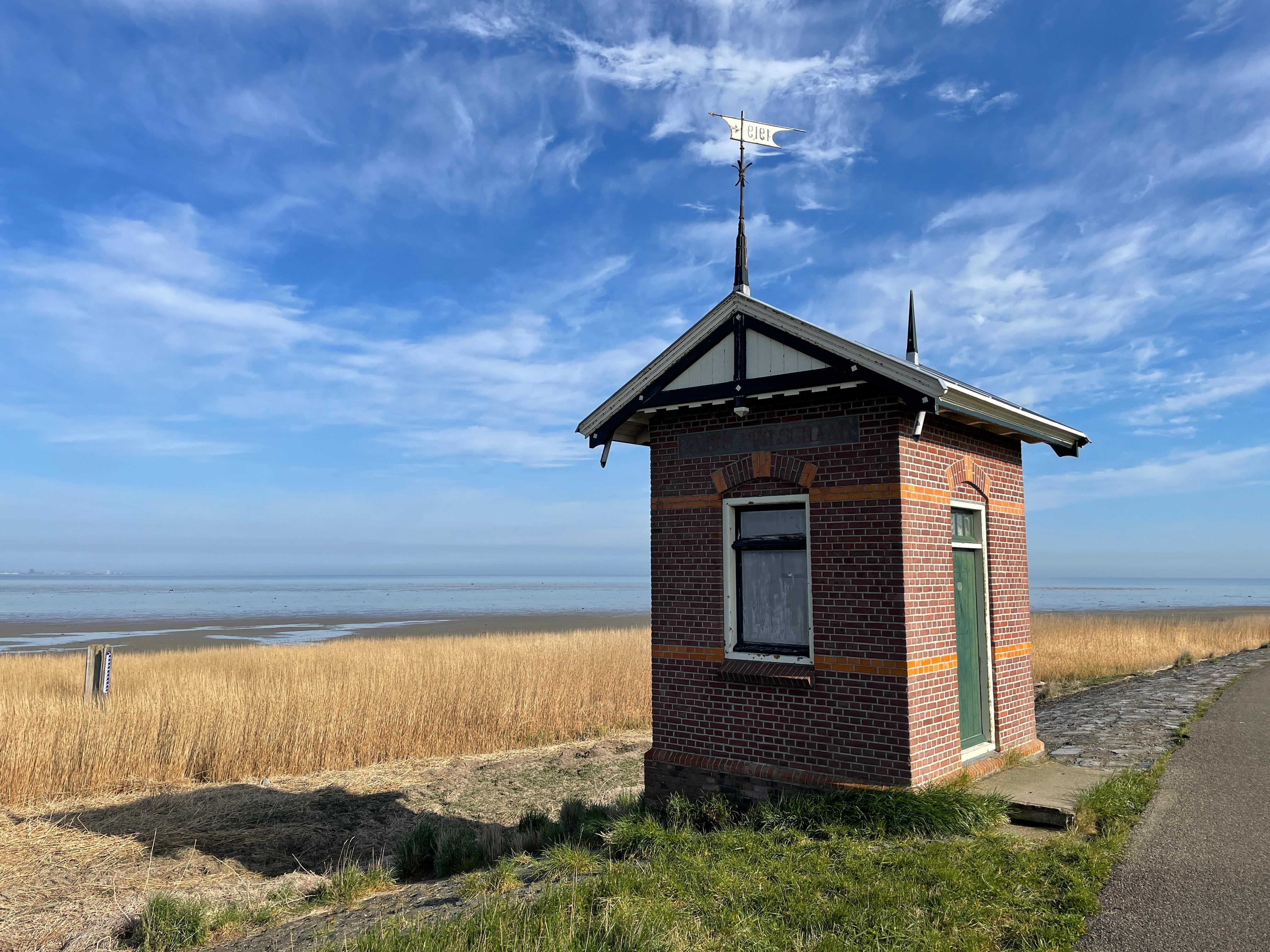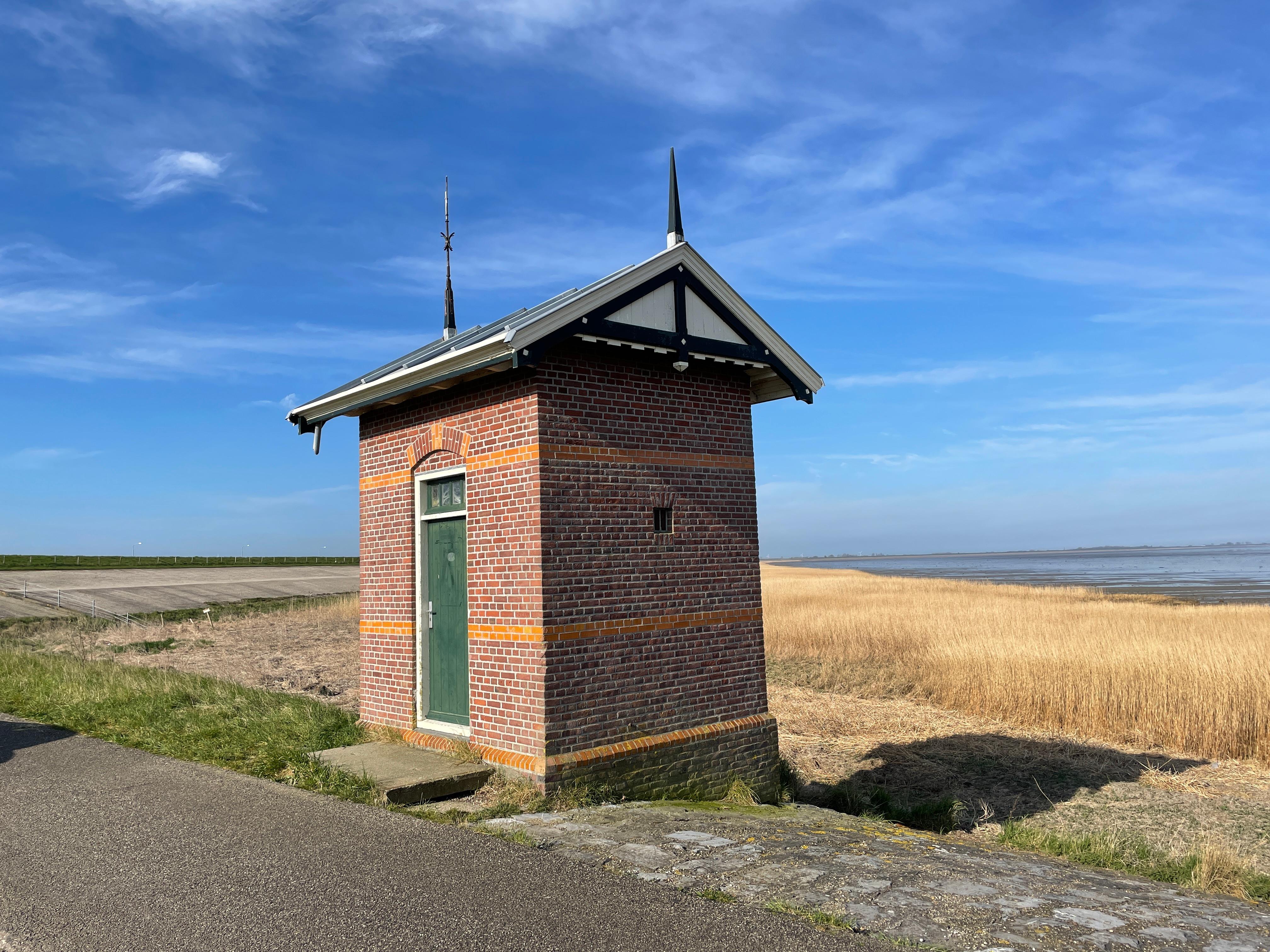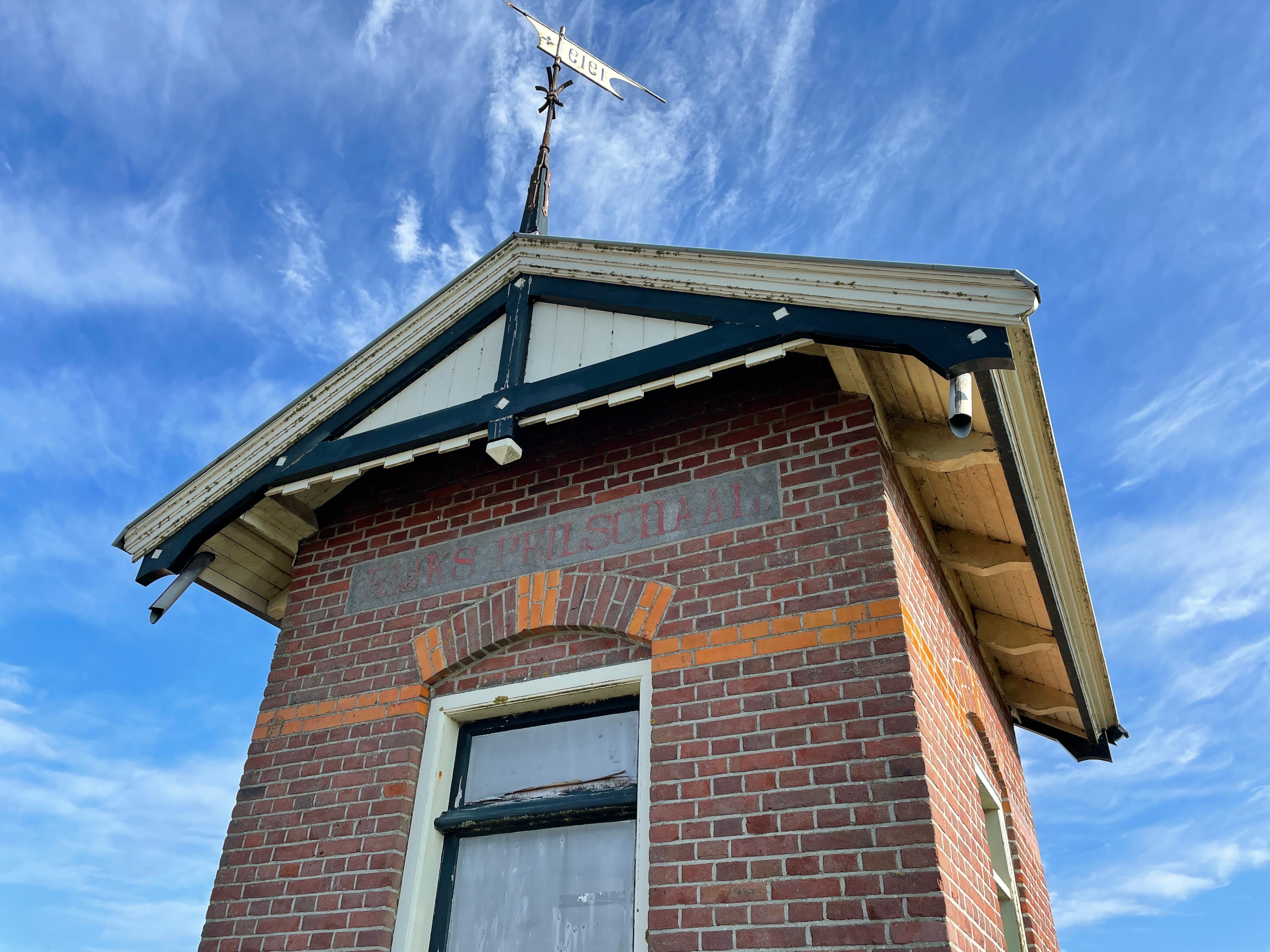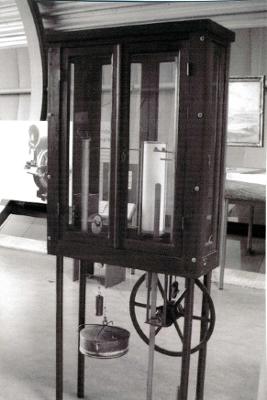TThis gauge house is one of the two gauge houses on Wieringen. The other is located on the Havenkade in Den Oever. Both gauge houses date from 1919. They were built on behalf of Rijkswaterstaat and were used to record the water level. There were more along the coast. How does the level recorder work? The sounding houses contained a level recorder that worked according to a simple principle. Seawater came through a pipe into a well in the house, in which there was a float that moved up and down with the changing water levels. The float actuated a pen that wrote on a sheet of paper stretched on a roll. A clock powered the roll of paper. An official regularly came to wind the clock and change the paper on the roll. The recorded water levels were sent to Rijkswaterstaat. The gauge houses on the former island of Wieringen were built before the construction of the Korte Afsluitdijk towards Van Ewijcksluis and the large Afsluitdijk towards Friesland. This provided insight into the influence of the construction of those dikes on the water levels. After the Second World War, the computer took over the measuring work and the houses became superfluous. Valuation The gauge house is of cultural and architectural-historical value. It is a well-preserved example of the gauge houses from the first quarter of the 20th century that were built by the Dutch government. It is an element in the history of water management in the Netherlands Sources – Register of monuments via www.monumentenregister.cultureelerfgoed.nl – Wikipedia via www.wikipedia.nl

Peilschaalhuisje Westerland
Nearby locations
-

Camping Waddenzee
- Location
- Westerland
In Westerland, on the former island of Wieringen, lies Camping Waddenzee. In the middle of the polder landscape, Wieringen offers beautiful views over the polder and the Amstelmeer. Only a 15-minute drive from the North Sea coast, Camping Waddenzee is the ideal base for exploring North Holland. The restaurant with ice cream parlor and playground guarantees fun for young and old.
-
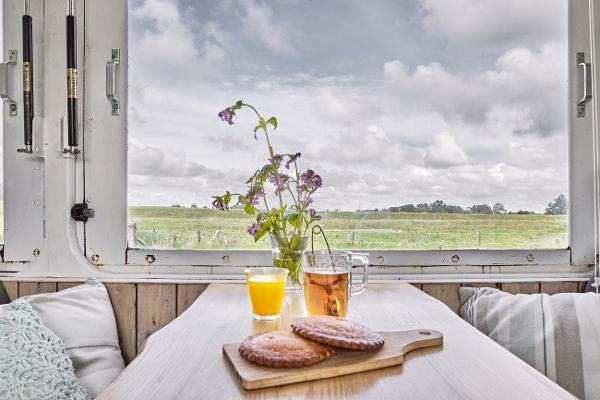
Camping Terra Incognito
- Location
- Westerland
Camping Terra Incognito is gelegen op het meest westelijke puntje van het onontdekte voormalige waddeneiland Wieringen. Het is perfect voor degenen die nieuwe ervaringen willen opdoen en deze willen delen met gelijkgestemde avonturiers. Ontsnap aan de drukte en ontdek deze verborgen parel. Verken het schilderachtige boerenland, geniet van het zonnestrand aan het Amstelmeer en ervaar de dynamiek van de Waddenzee.
-

circular walk Westerland from Wieringen
- Location
- Westerland
Walking route of Landscape North Holland. Walking route on the western tip of the former island of Wieringen. Wieringen is a "hidden" Wadden Island full of traces of the last ice age. Due to the closure of the Amsteldiep in 1924, the construction of the Afsluitdijk and the Wieringermeerpolder, Wieringen merged into the Noordkop. But it is still full of hidden stories, old villages, height differences, hollow roads, extensive meadows.
-

Jan Rotgans
- Location
- Westerland
Boat trips at the Wadden Sea with Jan Rotgans.
-

Charmelogies WADZOUT’T
- Location
- Westerland
Come get a breath of fresh air on Hollands most accessable Waddenisland. On arrival at Wadzout 't, most people have the same experience. You feel enclined to take off your watch and switch off your cellphone. The suitcases have been packed, checked for the umpteenth time not to forget anything. Lock the door and on your way in the car towards the first traffic queue. And then, from all the hurry and hectic you're suddenly at Wadzout 't. Quiet... fresh air, the rustle of the sea and a view as far as the eye can see! A holiday destination where you can, but don't have to do anything.
-

Camping Zeezicht
- Location
- Westerland
Gerrit and Gusta Lont, give you a warm welcome to Camping Zeezicht. Beautifully situated on the Wadden Sea on the former island of Wieringen. Heated sanitary block and a small playground. It is a quiet site with permanent pitches. Located 600 meters from the Amstelmeer (including swimming, surfing, fishing) and only 15 km from the North Sea beach (Callantsoog, Julianadorp and Den Helder). It is also an ideal area for cyclists, walkers and bird lovers. In the area of ??fishing you can choose between fresh and salt water.
-

Marina De Haukes
- Location
- Westerland
The Watersport Vereniging Amstelmeer has both certified courses, competition events and a fun component that often goes together. In the summer months there is a competition against each other on Tuesday evening, with a pleasant discussion afterwards at the bar in the clubhouse, where the sausage is cut by the person who draws the winning fate. Several times a year competitions for sailing boats and tours for motor boaters are organized such as the opening championships, 4-port competition, dab race, eel race etc.
-

Wieringer IJssalon
- Location
- Westerland
With traditionally made ice cream in many changing flavors, every visit is a party!
-

B&B Huize Doeschot
- Location
- Westerland
B & B Huize Doeschot is an authentic farmhouse which has been completely restored since 1992. It is located on the slope of the westerner Bult which is also the highest pit of the island. The stay for guests consists of two spacious sitting-bedrooms. The house has a spacious garden of 13,500 m2 with terraces, footpaths and seats, allowing you to enjoy peace of mind.

